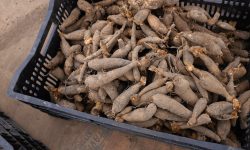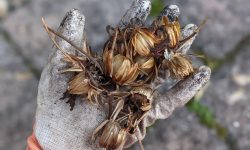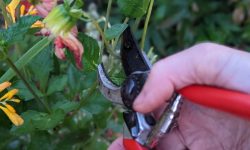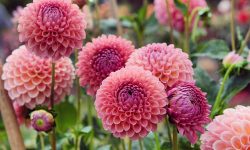Coneflowers are among the most beloved perennials in North American gardens, known for their vibrant petals, daisy-like shape, and ability to attract pollinators all season long. Whether you’re a seasoned gardener or just planting your first patch, timing is everything when it comes to getting the most from these stunning blooms.
So, when do coneflowers bloom—and how can you ensure a long, colorful display from spring to fall? This guide will walk you through their blooming timeline, regional differences, care tips, and expert techniques to help you enjoy a garden bursting with coneflowers for months on end.
Understanding the Coneflower Bloom Cycle

The coneflower bloom cycle begins in early spring when the soil warms and dormant roots awaken. You’ll first notice new basal growth—low-lying rosettes of leaves that gradually expand as temperatures rise. During this vegetative stage, the plant focuses on building strong roots and foliage to support future flower production.
By late spring to early summer, depending on your region, the plant starts forming tall flower stalks. These stalks develop multiple buds that mature over the following weeks. Once the first buds open, the blooming stage begins in earnest, often continuing for several months. Each flower opens in succession, which helps prolong the show and maintain pollinator interest throughout the season.
After blooming, the flower heads gradually fade and form distinctive seed cones, which give the plant its name. These seed heads can remain attractive well into fall and winter, especially when left uncut. The cycle ends with the plant entering dormancy in late fall, storing energy in its roots to prepare for the next growing season.
Environmental conditions, plant age, and variety can all affect the timing and length of each stage in the cycle. With proper care, coneflowers become more robust with each passing year, delivering more blooms and stronger stems season after season.
Typical Blooming Timeframe for Coneflowers
General Bloom Period
Coneflowers are classic summer bloomers that bring vibrant color to the garden during the hottest months. In most temperate zones, their bloom typically starts in early to mid-June and hits its peak by July. However, this timing is highly influenced by local climate conditions. In areas with an early and warm spring, coneflowers may begin blooming in late May. Conversely, in cooler or higher-altitude regions, the first blooms may not appear until late June or early July.
Once the blooming phase begins, coneflowers don’t stop quickly. Each flower can remain vibrant on the plant for two to three weeks, and because the plant produces new buds over time, the overall blooming period can stretch for up to four months. With regular deadheading and proper care, gardeners in milder zones can enjoy blooming well into October. This long flowering window makes coneflowers one of the most reliable sources of mid- to late-season color in the perennial garden.
First-Year vs. Established Plants
There is a noticeable difference between first-year coneflowers and established ones when it comes to blooming performance. Seed-grown coneflowers planted directly into the garden in spring often focus their first season on root development, especially if started late. As a result, their flowering may be limited, or they may not bloom at all that year.
On the other hand, first-year plants that are started indoors 8–10 weeks before the last frost or purchased as nursery-grown transplants are more likely to bloom in their inaugural season. Even so, their bloom may be shorter and less abundant compared to mature specimens.
By the second or third year, coneflowers become well-established, and their flowering dramatically improves. Established plants typically bloom earlier in the season, produce more stems and flowers, and display increased vigor. With proper maintenance like spring division and regular feeding, these mature plants can reward gardeners with a lush, prolonged display that gets better every year.
Regional Differences in Bloom Time
Northern Climates
In cooler regions such as USDA Zones 3 to 5, coneflowers experience a delayed start to their growing season due to extended winters and late spring thaws. Soil temperatures often remain cold well into May, which pushes back the plant’s emergence and subsequent blooming. In these climates, coneflowers usually begin to flower in mid to late June, once the soil has sufficiently warmed and daylight hours are long.
The peak blooming period tends to fall between July and early August, aligning with the warmest part of the year. Although the growing season is shorter, coneflowers still manage to provide a strong mid-summer show. With consistent deadheading and favorable conditions, blooms may continue through early September, though cold snaps and early frosts can abruptly end the display.
To help coneflowers thrive in northern climates, gardeners should choose early-blooming or cold-hardy cultivars and consider starting seeds indoors to give plants a head start before transplanting them outdoors.
Southern Climates
Coneflowers flourish in USDA Zones 7 to 9 thanks to their heat and drought tolerance. In these warmer regions, spring arrives earlier—sometimes by mid to late March—allowing coneflowers to break dormancy and begin growing weeks ahead of their northern counterparts. As a result, blooming may begin as early as late May or even mid-May in particularly warm years.
The extended warmth of southern summers means that coneflowers can bloom continuously into October if they receive adequate care. In some cases, deadheading and light summer fertilization can encourage fresh flushes of blooms well into the fall. Because winters are milder, these perennials also tend to establish more quickly and return stronger each year.
However, southern gardeners should watch for the stress of extreme heat and humidity, which can reduce bloom quality. Providing afternoon shade or applying mulch can help protect roots and extend flowering duration.
High-Altitude or Coastal Areas
In high-altitude regions or coastal areas with cooler summers and frequent fog, the growing conditions can delay the blooming of coneflowers. These locations often experience slow soil warming and reduced sunlight intensity, which leads to later emergence and flower development. In such environments, coneflowers may not bloom until early to mid-July.
Despite the delayed start, the bloom period in these areas can still be impressive, especially with consistent summer temperatures and ample sunlight. The cooler climate may even extend the lifespan of individual flowers, resulting in a more gradual and long-lasting display that can persist into late September.
Gardeners in these regions may benefit from selecting coneflower varieties bred for cooler conditions or planting in the sunniest, most sheltered parts of the garden to ensure timely blooming. Reflective mulches or light-colored surfaces nearby can also help raise soil temperatures and speed up growth.
Factors That Influence Blooming
Climate and Weather Patterns
The timing and quality of coneflower blooming are closely tied to the weather conditions in early spring. A prolonged cold spell or late-season frost can set back plant development by several weeks, especially if young shoots are damaged. Even mild spring chills can cause the plant to delay forming buds until temperatures stabilize.
On the other hand, a warm, early spring often jumpstarts coneflower growth. As soil temperatures rise above 50°F (10°C), roots begin to activate, and foliage emerges more quickly. This can lead to earlier flower stalk development and a longer overall bloom period. However, erratic weather—such as rapid temperature swings, hail, or heatwaves—may stress the plant, causing it to delay blooming or produce fewer flowers.
Gardeners can mitigate the impact of unpredictable spring weather by mulching around the base of the plants to moderate soil temperatures and protect roots from sudden cold snaps.
Soil Conditions and Fertility
Healthy, well-drained soil is foundational to strong blooming. Coneflowers thrive in soils that are loamy or sandy, with good aeration and minimal compaction. Heavy clay or overly wet soils can lead to poor root oxygenation and root rot, which severely limits flower production.
While coneflowers aren’t heavy feeders, they do benefit from moderate fertility. Soils low in essential nutrients, especially phosphorus and potassium, may result in weak stems and few flowers. On the other hand, excessive nitrogen—often from over-fertilization—can encourage lush foliage at the expense of blooms.
Incorporating compost, aged manure, or a balanced slow-release fertilizer in early spring helps provide the right nutrients to support root development and strong flower formation throughout the season.
Sunlight Exposure
Coneflowers are sun-loving perennials that require full sun to reach their full blooming potential. Ideally, they should receive at least six to eight hours of direct sunlight each day. When grown in insufficient light, coneflowers often develop elongated, weak stems and sparse flower production. In dense shade, they may fail to bloom altogether.
Sunlight not only influences bud development but also affects bloom longevity and color intensity. Flowers grown in full sun tend to have more vibrant petals and hold their shape longer. For gardeners in extremely hot climates, however, providing a bit of afternoon shade can prevent heat stress without compromising bloom quality.
Plant placement is crucial—choose open, unobstructed spots where sunlight is abundant throughout the day, especially during the morning and early afternoon hours when light is most beneficial.
Watering Practices
Although coneflowers are highly drought-tolerant once mature, proper watering is essential—especially during their establishment period and peak bloom months. Consistent moisture helps support nutrient uptake, bud formation, and petal longevity. In regions with irregular rainfall or during dry spells, supplemental watering may be necessary to maintain healthy, blooming plants.
However, overwatering is a common mistake. When the soil stays constantly wet, roots become vulnerable to fungal infections and rot, which can weaken the plant and inhibit flower production. Coneflowers prefer to dry out slightly between waterings, especially in well-drained soils.
For best results, water deeply but infrequently, allowing moisture to reach the root zone. Applying mulch around the base of the plant helps retain moisture, regulate temperature, and prevent evaporation, creating ideal conditions for prolific and sustained blooming.
Blooming Differences Among Coneflower Varieties
Purple Coneflower (Echinacea purpurea)
Echinacea purpurea, or the classic purple coneflower, is the most widely grown and recognized species in home gardens. Its signature pinkish-purple petals and golden-orange centers begin appearing in late June and often last through August. When grown in full sun and provided with moderate care, this variety can produce a steady stream of blooms for up to 10 weeks.
Deadheading spent flowers encourages repeat blooming and helps maintain a tidy appearance. If left untrimmed, the seed heads can persist into fall, attracting finches and other seed-loving birds. This variety also tends to naturalize well, spreading gently year after year, making it a great long-term addition to perennial beds.
Hybrid Varieties
Hybrid coneflowers have expanded the genus far beyond purple, offering a wide range of colors—from bright oranges and reds to soft whites, yellows, and even greens. Cultivars like ‘Cheyenne Spirit’ boast multicolored blooms on a single plant, while ‘PowWow Wild Berry’ is known for its compact habit and early flowering.
Many hybrids are bred for improved blooming performance, with some varieties flowering as early as late May and continuing through September. Others, such as ‘Sombrero Hot Coral’ or ‘Green Twister’, are developed for extended bloom duration, strong stem structure, and disease resistance.
However, some hybrids may not be as hardy or long-lived as the species types, and their bloom behavior can vary slightly from year to year. For gardeners seeking vibrant, early-season color and prolonged display, hybrids offer a dynamic and often more floriferous alternative to traditional varieties.
Native vs. Cultivated Types
Native coneflowers, such as Echinacea pallida or Echinacea paradoxa, often have a more subtle and natural aesthetic, with thinner petals and softer coloring. These species typically bloom slightly later in the season—often in July—and their flowering window may be shorter, lasting four to six weeks.
Unlike highly bred cultivars, native types tend to be more resilient in poor soils and are exceptionally beneficial for native pollinators. Their natural growth habits also make them ideal for prairie-style plantings or wildflower meadows.
Cultivated varieties, by contrast, have been selected and bred for specific traits like early blooming, repeat flowering, compact size, or bold colors. As a result, they often bloom longer and more prolifically, especially when provided with favorable growing conditions. However, they may require more care and may not provide the same level of ecological support as their wild counterparts.
How to Encourage Early and Extended Blooming
Starting Indoors or Transplanting Early
By starting coneflower seeds indoors 8 to 10 weeks before the last expected frost, you allow seedlings to establish strong roots before being transplanted outdoors. Once soil temperatures consistently reach above 60°F (15°C), moving these young plants into the garden gives them a growth advantage. This method is especially helpful in cooler climates, where the outdoor growing season is shorter, as it can lead to flowering several weeks earlier than direct-sown plants.
Proper Spring Care
Early spring maintenance sets the stage for a strong bloom season. Remove all dead stems and debris from the previous year to allow sunlight and air to reach the new growth. Applying a layer of compost or a balanced, slow-release fertilizer (such as 10-10-10) at the base of the plant provides essential nutrients for healthy shoots and strong flower production. This simple care step supports vigorous growth and encourages earlier bud formation.
Regular Deadheading
Removing faded blooms before they go to seed redirects the plant’s energy into producing more flowers instead of seeds. This easy and quick task can effectively prolong the blooming window by several weeks. While some newer hybrid varieties are self-cleaning, regular deadheading still improves overall appearance and bloom density. Simply snip the spent flower stalks back to the next leaf node to stimulate new bud development.
Dividing and Rejuvenating Older Plants
As coneflowers mature, they may become overcrowded and less productive. Dividing clumps every three to four years in early spring helps maintain plant vigor. Carefully dig up the plant, separate the root ball into smaller sections, and replant them with adequate spacing. This rejuvenation reduces competition for nutrients, improves air circulation, and boosts blooming capacity, resulting in healthier, more floriferous plants in the growing season ahead.
How Long Do Coneflowers Bloom?
Coneflowers typically bloom for a long stretch—from early summer through early fall—making them one of the most reliable perennials for continuous color in the garden. On average, the main blooming period lasts about 8 to 12 weeks, but with proper care and favorable conditions, many plants will continue to produce flowers sporadically until the first frost arrives.
Some modern hybrid varieties have been specifically bred to bloom for an extended season, sometimes starting earlier in late spring and continuing well into mid-autumn. In warmer climates with mild winters, the bloom period can stretch even longer. These extended bloomers are particularly useful in gardens where continuous color is desired without frequent replanting.
Deadheading—removing spent flowers—plays a major role in prolonging blooming. When faded blooms are regularly trimmed off, the plant redirects energy into forming new buds rather than setting seed. Similarly, ensuring the plant receives at least 6 hours of direct sunlight per day, along with consistent moisture and occasional fertilization, supports ongoing flower production. With thoughtful care, you can enjoy waves of colorful coneflowers for much of the growing season.
Tips for Maximizing Bloom Time
Soil Preparation and Amendments
Start by preparing your soil well before planting season begins. In early spring, work compost, aged manure, or well-rotted leaf mold into the soil to enrich it with organic matter. This not only improves drainage and structure but also ensures your coneflowers have access to the nutrients they need throughout the growing season. A soil pH between 6.0 and 7.0 is ideal, and periodic soil testing can help guide amendments to maintain this optimal range.
Spacing and Air Circulation
Coneflowers thrive when they aren’t overcrowded. Leave about 18 to 24 inches between plants to promote adequate air circulation. This reduces humidity around the foliage, discouraging fungal infections and encouraging stronger stems and fuller blooms. Good spacing also ensures that each plant receives plenty of sunlight, which is essential for maximum flower production.
Mulching for Consistent Moisture
A 2- to 3-inch layer of organic mulch—such as shredded bark, straw, or finely ground leaves—helps regulate soil temperature and conserve moisture during hot summer months. Consistent moisture prevents stress-related bloom drop and encourages a longer blooming cycle. Mulch also suppresses weeds that compete for nutrients and water, giving your coneflowers an edge.
Pest and Disease Management
Even though coneflowers are generally resilient, they can occasionally be affected by pests and diseases that reduce flowering. Regularly inspect plants for pests like aphids, Japanese beetles, or caterpillars, and treat infestations early using insecticidal soap, neem oil, or manual removal. Watch for signs of fungal diseases such as powdery mildew or leaf spot, especially in humid conditions. Remove affected foliage and apply appropriate fungicides if necessary to keep the plant blooming at its best.
Should You Worry If Your Coneflowers Don’t Bloom?
If your coneflowers aren’t blooming, it’s usually not a major cause for concern. Often, young plants take a season or two to establish before flowering reliably. Lack of blooms can also result from too much shade, overcrowding, poor soil, or over-fertilization with nitrogen-rich products. Addressing these issues—by ensuring at least six hours of sun, improving drainage, and pruning dead growth—often encourages blooming the following season. Be patient and monitor the plant’s health rather than immediately assuming failure.
Companion Planting to Prolong Interest
Best Companion Plants for Coneflowers
Planting coneflowers with other complementary perennials extends your garden’s visual appeal through multiple seasons. Consider pairing them with black-eyed Susans, which bloom in similar hues and timing, or bee balm, which attracts pollinators and adds bright red or pink tones. Salvia offers vertical interest and rich purple spikes that contrast beautifully with coneflowers’ daisy-like form. Ornamental grasses like switchgrass or little bluestem contribute texture and movement, especially as fall approaches. These plants not only coordinate well visually but also thrive in similar soil, sun, and water conditions—making garden care easier and more cohesive.
Benefits of Companion Planting
Companion planting is more than just a design strategy—it fosters a healthier and more resilient garden. Flowers like bee balm and salvia attract beneficial insects such as bees, butterflies, and hoverflies that boost pollination for nearby plants, including coneflowers. Some companion plants also repel common pests or act as trap crops, reducing the need for chemical control. When strategically placed, companion plants help conserve soil moisture, suppress weeds, and create microclimates that protect delicate roots from extreme heat. This balance results in stronger, longer-lasting blooms and a more biodiverse garden that supports wildlife throughout the growing season.
Late-Season Bloom Boosters
Late in the growing season, coneflowers may slow their blooming, but with the right care, you can give them a final boost. Start by deadheading any faded blooms to encourage continued flowering instead of seed production. Apply a light dose of balanced fertilizer or compost to replenish soil nutrients that may have diminished over the summer. Make sure your coneflowers receive at least six hours of sunlight daily, even as daylight shortens. If rainfall is scarce, provide supplemental water to keep the soil evenly moist. Removing competing weeds and trimming back neighboring plants can also reduce stress and redirect energy to blooming. With these steps, your coneflowers can continue producing vibrant blooms well into early fall, extending their impact in the garden.
In addition to cultural care, consider pairing late-season bloom boosters like liquid seaweed or fish emulsion to stimulate flower production naturally without overfeeding. These gentle tonics can trigger new growth and enhance flower color. Mulching around the base of your coneflowers in late summer helps regulate soil temperature and retain moisture, creating optimal conditions for continued blooming. As nights cool, this extra support can make the difference between fading blooms and a fresh wave of vibrant flowers to carry your garden gracefully into autumn.
Wildlife and Pollinator Attraction During Bloom
Coneflowers are magnets for wildlife and pollinators during their bloom period. Their vibrant, daisy-like flowers attract bees, butterflies, and beneficial insects that feed on nectar and pollen. Goldfinches and other songbirds are drawn to the seed heads, especially in late summer and early fall. By supporting these creatures, coneflowers help maintain a healthy garden ecosystem. Planting a variety of bloom colors and allowing flowers to go to seed extends wildlife interest throughout the season while encouraging natural pest control and pollination.
In addition to attracting bees and butterflies, coneflowers provide a rich food source for native bees—crucial pollinators for local ecosystems. Their presence in the garden also helps support beneficial insects like ladybugs and parasitic wasps, which aid in natural pest control. Leaving the seed heads intact in the fall offers shelter and a steady food supply for birds, making your garden more vibrant and ecologically balanced year-round.
Seasonal Coneflower Bloom Care Calendar
Spring
As the weather warms, begin by removing any dead stems or leaves left from the previous year to make way for new growth. Apply a balanced slow-release fertilizer or top-dress with well-aged compost to nourish the roots. Check for early signs of growth around the crown, and divide crowded clumps if needed—this helps improve airflow and promotes stronger blooming. Spring is also a great time to transplant young plants or introduce new coneflowers to the garden.
Summer
During the height of the growing season, deadhead spent blooms regularly to encourage continuous flowering. Water deeply during dry spells, especially in hot climates, but avoid overwatering as coneflowers are drought-tolerant. Keep mulch refreshed around the base to conserve moisture and suppress weeds. Monitor for common pests like aphids or Japanese beetles, and remove them promptly. This is also the time when coneflowers are most attractive to pollinators like bees and butterflies, adding life and movement to your garden.
Fall
As blooming slows, allow some flower heads to remain on the plant—these dry seed heads provide food for birds like finches and goldfinches. Perform only light trimming to remove diseased or damaged stems, and avoid major pruning, which could reduce winter interest and wildlife value. You can also collect seeds from dried flower heads if you want to propagate more plants next season. Stop fertilizing by early fall to help plants harden off for the winter.
Winter
Coneflowers naturally go dormant in winter. Leave the dried stems and seed heads standing to create structure and texture in the winter garden, while also offering food and shelter to birds and small wildlife. There’s no need to fertilize or water unless winter is unusually dry. Avoid disturbing the root zone, and let the plant rest until spring growth begins again. Snow cover acts as insulation, so don’t be concerned if plants disappear completely from view—they’ll return stronger next season.
FAQ About When Coneflowers Bloom
What can I do if my coneflowers aren’t blooming well?
Poor blooming can result from too much shade, nutrient-poor soil, or overcrowding. Make sure your coneflowers are getting at least 6–8 hours of full sun daily. Improve soil drainage with compost and avoid over-fertilizing, which can lead to leafy growth with fewer blooms. Dividing the plants every few years helps reduce competition and revives blooming vigor.
How often should I deadhead coneflowers for continuous blooms?
Deadhead spent blooms every few days during peak summer to stimulate continuous flower production. Snip back the stem to just above a set of healthy leaves. If you want to provide food for birds or allow reseeding, leave some blooms intact in late summer and fall.
Can I encourage a second flush of blooms in late summer or early fall?
Yes. After the main flush fades, cut the stems back by one-third and water deeply. Apply a balanced, slow-release fertilizer or a layer of compost. With continued warm weather and consistent moisture, coneflowers can rebloom well into early fall.
Should I cut back coneflowers in the fall?
You can lightly trim the plants to tidy up, but it’s beneficial to leave some seed heads for birds and overwintering insects. Full cutbacks should be avoided until late winter or early spring, just before new growth emerges. This approach also protects the crown during cold spells.
How do I protect coneflowers in winter to ensure healthy blooms next year?
Mulch around the base of the plant with 2–3 inches of organic mulch after the first hard frost to insulate the roots. Avoid fertilizing in winter. Leaving stems and seed heads intact helps trap snow, adds visual interest, and offers shelter for beneficial insects, setting the stage for vigorous growth and blooming next spring.
Conclusion: Timing Is Everything for Coneflower Blooms
Understanding when coneflowers bloom—and how to support and extend that bloom—is key to enjoying their full beauty in your garden. While bloom time varies by climate, variety, and care practices, most gardeners can expect vibrant flowers from late spring through early fall. With a little planning, attention to growing conditions, and a few maintenance techniques, coneflowers will reward you with months of color, wildlife activity, and low-maintenance joy year after year.






